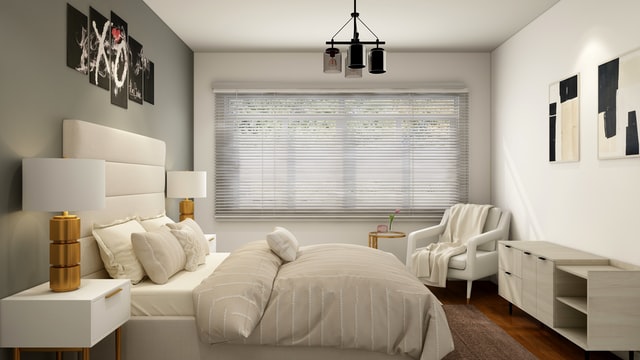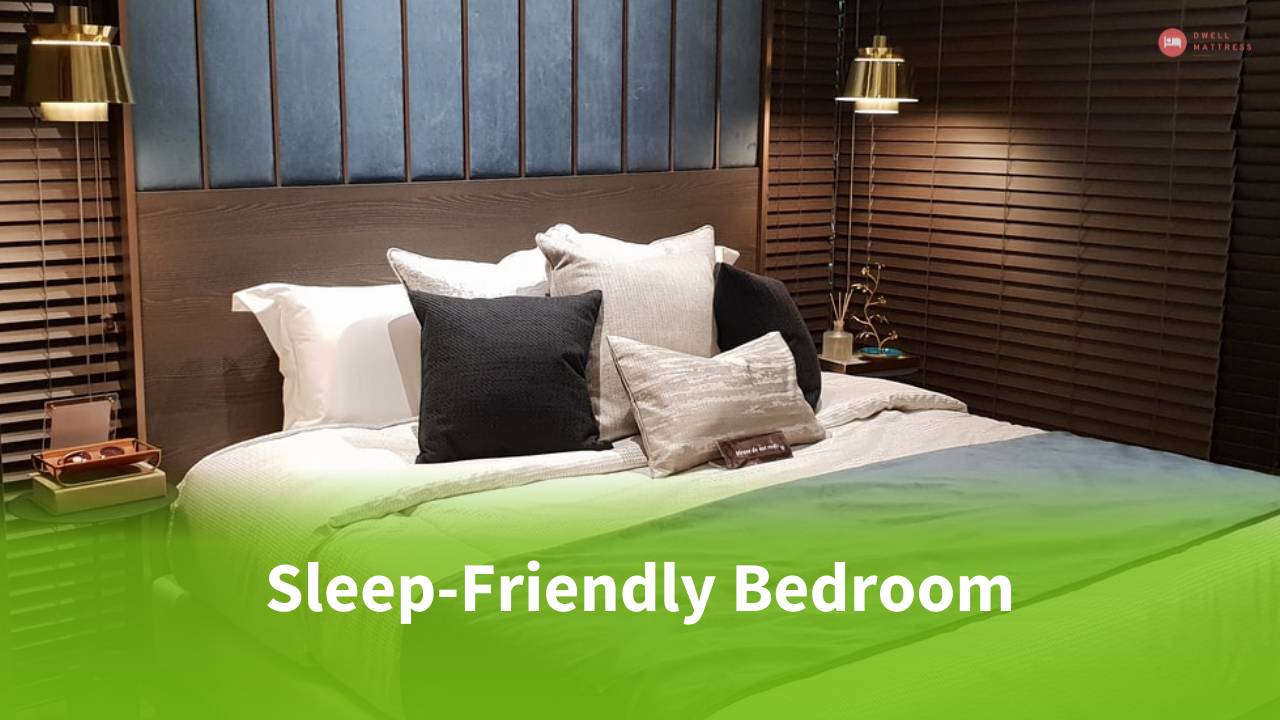
Your bedroom plays a huge role in the quality of your sleep. If you’re having trouble getting a good night’s sleep, it could be due to your bedroom’s setup and lighting. Here are four tips for creating a relaxing, sleep-friendly room:
There are so many elements that can affect how well we sleep—everything from the temperature in our bedroom to the noise and light in our surrounding environment. By making some simple changes to your bedroom, you can improve your sleep quality and get better rest. Here are four tips for getting started.
To ensure that you get the best night’s sleep possible, it’s important to make sure you have the right sleep environment. Experts recommend creating a dark bedroom with minimal light sources by drawing your shades or using blackout curtains. You should also avoid any distractions like computers or televisions that emit light and may prevent you from falling asleep or staying asleep. Some foods—such as chili peppers and cold pizza—might also be affecting how well you sleep, so try to drastically cut down your intake for the sake of your health and wellness.
Light that comes in from outside your home can leave you feeling groggy. So, the ideal room for sleeping is one that’s dark when it’s time to sleep and light when it’s time to wake up.
Light reduction for the bedroom includes eliminating blue light emitting devices such as TV and computer screens within an hour before bed, as well as using blackout curtains or shades to eliminate any outside light.
Create the optimal sleep environment with a setting that’s just right for you. Our room thermostats make it easy to ensure your bedroom stays at a restful temperature that promotes quality sleep.
A cool bedroom promotes better sleep for adults and children. Studies have shown that setting the thermostat to between 60-67 degrees Fahrenheit could improve sleep quality and duration. You may wish to purchase a thermometer to help you track your temperature preference.
A cool bedroom can greatly enhance your sleep quality. As people begin to fall asleep, their body temperature naturally decreases. This drop in body temperature has a calming effect that helps promote the sleep-inducing process. Keeping your bedroom cool facilitates this natural occurrence and makes it easier for you to fall asleep and stay asleep.
Your bedroom may be one of the biggest contributors to a healthy night of sleep. Aim for nighttime temperatures of around 60 to 67 degrees (16 to 19 Celsius). This optimal temperature range helps your body temperature fall into the relaxed zone as you slip into slumber—a benefit that’s especially important for all insomnia sufferers. In general, experts consider 60 to 67 degrees (16 to 19 Celsius) for optimal sleeping conditions.
Microfiber sheets can be a great option for most people. They’re great if you tend to run “hot” when you sleep, as the synthetic fabric is more breathable than other types of sheets. Also, they’re more wrinkle-resistant than cotton sheets and don’t hold onto body heat as much as cotton sheets do.
Once you’ve settled on the right mattress, choose a sheet set that complements its size and feel. Sets are available in single, full, queen, or king. To ensure your sheets stay snugly in place—bedding that shifts around during the night can disrupt sleep—consider using a bed skirt or foundation. Made for beds with wooden frames, drop-in foundations provide an extra layer of storage for bedding that would otherwise take up space on the floor.
Your mattress preference will depend on your sleep position, whether you sleep with another person or alone, how hot you sleep, and other factors. A supportive pillow will help support your neck and back, while a poorly chosen pillow will contribute to headaches, neck pain, and arm numbness.
Also consider what you put on top of your mattress. Choosing a mattress cover or sheet set that feels pleasant will make it easier for you to fall asleep and decrease the likelihood of you waking up too hot or too cold. Test different sheets or blankets before deciding on your favorite ones.
What can you do to minimize noise in your bedroom at night? Turn off all outside sounds (including the TV—the sudden changes in volume make it harder for you to fall and stay asleep). A quiet environment is much more conducive to a peaceful night of sleep.
A quiet bedroom is critical to a good night’s sleep. When you turn off the TV (try a classic in the bedroom), tuck away your cell phone, and close the blinds, you’re appealing to the part of your brain that wants to relax and unwind. This minimizes distractions so you can calm your body and fall into a deep sleep. Just make sure you unwind for at least 30 minutes before turning in for the night; some people find a warm bath or short walk by themselves helps them de-stress before bed.
Noise from outside may keep you awake at night. Try leaving your TV off and curtains closed during the day so that once it’s time to sleep, your room is completely dark and quiet.
Minimizing noise in the bedroom at night can increase the amount of deep sleep you get while also making it less likely that you’ll wake up during the night. Do yourself a favor and turn off all outside sounds (including the TV—the sudden changes in volume make it harder for you to fall and stay asleep). A quiet environment is much more conducive to a peaceful night of sleep.
Sleep easy with this white noise machine, and get a great night’s sleep. Perfect for use in your bedroom or living room for when you want to eliminate ambient noises that disrupt your sleep or relaxation. Play the single noise, or mix and match 3 sounds— including tide, rainforest, and white noise—to create custom mixes.
Open your bedroom door to a good night’s sleep with the Sleep Solutions Bedroom. No matter what type of bed you have, or space you live in, this bedroom can set up any room for restful sleep. By setting up your bed in a way that’s most comfortable for you, and keeping your room dark, cool, and quiet, you’ll be able to transform your bedroom into a sleep environment that promotes restful nights.

